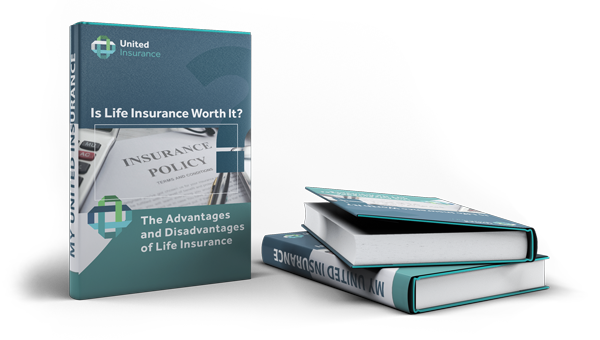
When you are looking for life insurance, it is important to understand the language that is used. This will help you make the best decision for your needs. In this blog post, we will discuss the most common terms used in life insurance policies. We will also explain what each of these terms means so that you can make an informed decision about which policy is right for you.
Costs With Insurance and the Terms
Administrative Expense: The life insurance company’s operating costs. It covers salaries, medical examinations, building rent, underwriting, advertising, printing costs, agency expenses, and premium taxes. These expenses get lumped into what you pay and are used to calculate dividends and premium rates. Accelerated Death Benefits: The death benefits that are available before the death of the insured. Sometimes called Living Benefits, they are usually accessible in cases of a chronic or terminal illness. Accidental Death Insurance: Generally an add-on to a regular life insurance policy, Accidental Death Insurance is a pretty accurate name. It is only paid if the death of the insured occurs as the result of an accident. Accidental Death and Dismemberment Insurance: An insurance policy that pays out only if the insured dies, becomes blind, or is dismembered in an accident.

All Interests
Accrued Interest: Interest that has been earned and recognized but not yet paid out. (Or the borrower has not received the payment).Agent: A person licensed by the state to negotiate insurance contracts. An agent can be independent and represent multiple companies, or a direct writer who sells policies for only one company. Amount of Insurance: The coverage that is issued by a life insurance company. Also called the Coverage Amount, Face Amount, or Sum Insured. Annuity: A contract that pays a fixed sum of money at regular intervals, usually for life. Annuity Certain: A contract that pays an income for a set number of years. As well as pay the annuitant’s beneficiary or estate if the annuitant dies before the end of the payment term.
Terms In Contract
Application: A statement of information made by a person applying for life insurance. Life insurance companies use the information from applications to determine the risk of each would-be policy-owner. Companies then determine an applicant’s underwriting classification and premium rates. Assignment: Is he legal transfer to another person or an entity like a financial institution. This is to the claim rights an individual has on an insurance policy. Beneficiary: The individual who receives proceeds from a life insurance policy at the death of the insured. Billing Date: The day of the month that the life insurance premium bill is due. (You’ll want to keep track of this to make sure your policy doesn’t lapse!)
Bonus VS Cash Surrender
Bonus Rate Annuity: An annuity carrying an extra-high interest rate offered for only the first year, to attract new policyholders. Cash Surrender Value: The cash amount you would get if you voluntarily terminate coverage. This would be before a policy becomes payable by death or maturity. Cash value minus surrender charge is the amount that is paid. This will also include, any outstanding loans, and interest on those loans. The cash value represents the savings component of a life insurance policy. This is because you can access the money relatively quickly if you need to.
What is Collateral Assignment
Collateral Assignment of Life Insurance: A contract that gives a lender claim to a life insurance policy death benefit as collateral for a loan. Contingent Owner: The person who will become the owner of a life plan if the original owner dies before the policy ends. Conversion Right: The right – granted by some term life insurance policies – to change the current policy of an individual to a permanent insurance policy within a certain timeframe, without giving proof of insurability. Cost of Insurance: The amount an individual must pay for his or her life insurance policy, also known as a premium. The monthly charge for a life insurance policy fluctuates depending on the insured person’s health, age, sex, and other considerations such as lifestyle and the nature of the person’s profession. Poor health and extreme hobbies are likely to increase the cost of insurance—or may even lead to denial of coverage altogether. Benefit Period: The period the life insurance covers the policyholder. Coverage End Date: The day the insurance coverage ends. Coverage Start Date: The day the insurance coverage becomes effective.
Benefits and Waivers
Here are a few more Life insurance terms you should really understand. Death Benefit: The amount of money paid to the beneficiary when the policyholder dies. Loans that are taken on these benefits, the payable amount will decrease. The amount of the benefit might also increase if there are more benefits payable when certain conditions are met. Disability Waiver of Premium: A condition that states that the life insurance company will not require the insured to pay the usual recurring fee to maintain the life insurance policy if the insured person becomes disabled. The definition of a disability can vary from one life insurance company to another, and policies can vary based on when and for how long they will waive a premium in the event of a disability. Adding a disability waiver usually leads to a higher premium. Direct Response: The direct sale of a policy by an insurance company to the insured, through the company’s employees, by mail, or over the counter

Disclosures
Disclosure Statement: A document explaining the details of the policy for the benefit of the consumer. Dividend: The return that some policyholders will receive as part of the distribution of a portion of an insurance company’s profits, as decided by the Board of Directors of the company.Evidence of Insurability: A statement of the prospective policyholder’s physical health and other information, such as assets and income, which helps the insurance company decide whether the applicant is eligible for insurance, and the amount of risk they pose to the company, and what premium the company will charge.
Bottom Line
There are tons of Life insurance terms within the insurance contract. We just wanted to highlight some of the most important ones. If you run into a term or a question that you are not sure of, we are always here to help.
